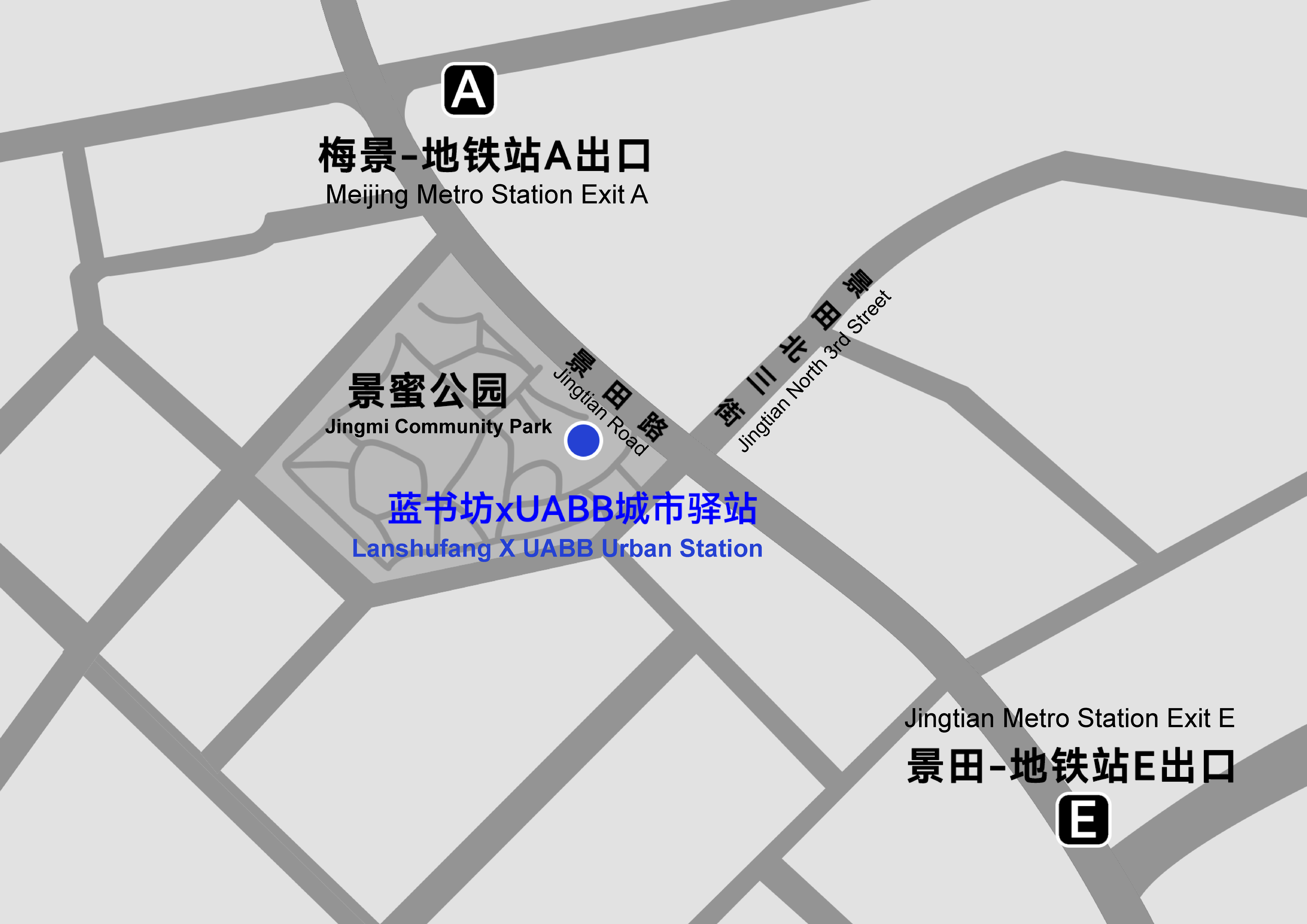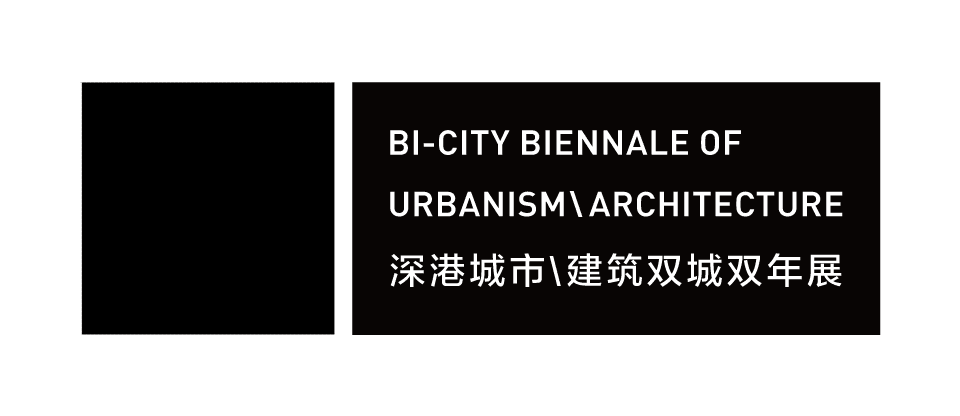The "Blue House x UABB Station" is located on the south side of Jingmi Community Park in Futian District. It is jointly established by the Shenzhen Biennale Public Art Foundation, Futian District Library, and the Futian District Urban Management and Comprehensive Law Enforcement Bureau. This initiative aims to create Shenzhen's first cultural space themed around urban architecture, with the goal of gathering urban vitality, cultivating urban architectural culture, fostering a friendly community, promoting academic exchanges, and enhancing environmental quality.


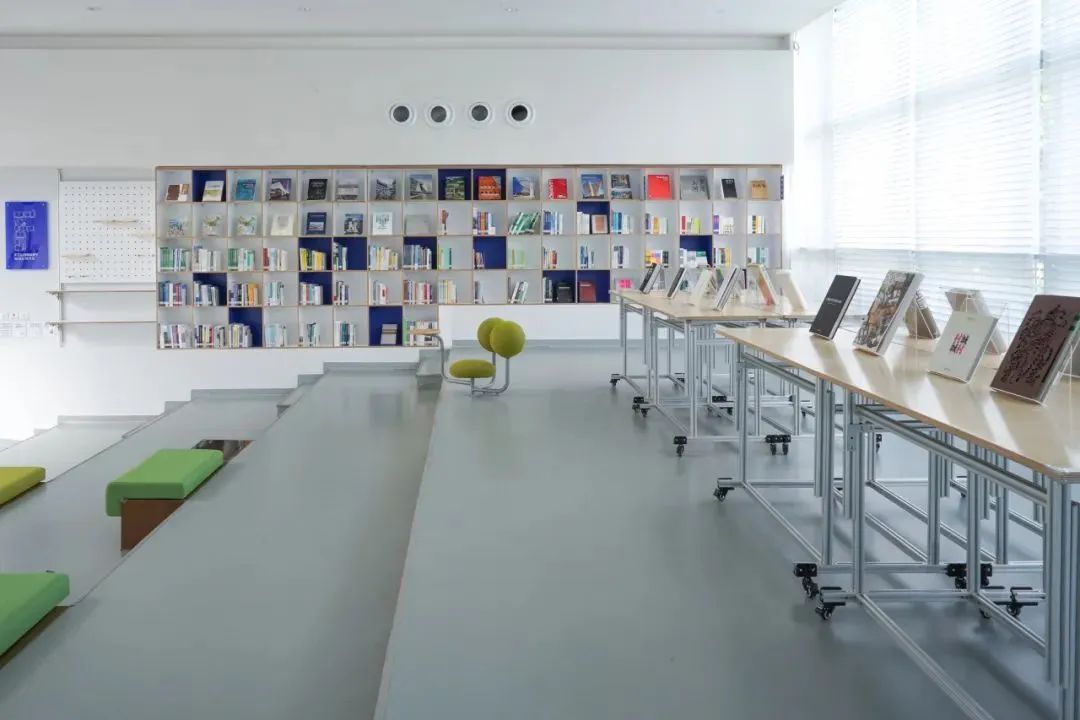
The "UABB Urban Station" represents an extension of the "Bi-City Biennale of Urbanism\Architecture (UABB)" into the daily life of the city. By empowering urban public architectural spaces and integrating exhibitions, cultural and creative products, and events, the UABB Urban Station will conduct urban architectural practices in daily life and small-scale spaces, connecting with the community and everyday life.
Launch Ceremony
On the afternoon of July 28, 2024, the "Blue House x UABB Urban Station Launch Ceremony and Brainstorming Session" was officially launched in Jingmi Park, Futian District. Representatives from the Shenzhen Planning and Natural Resources Bureau, Futian District Urban Management and Comprehensive Law Enforcement Bureau, Futian District Culture, Radio, Television, Tourism, Sports, and Tourism Bureau, Futian District Library, Shenzhen Biennale Public Art Foundation, and Shenzhen Urban Planning and Design Research Institute Co., Ltd., as well as past curators, exhibiting architects, designers, artists, academic experts, and citizens, gathered together to witness this significant moment.
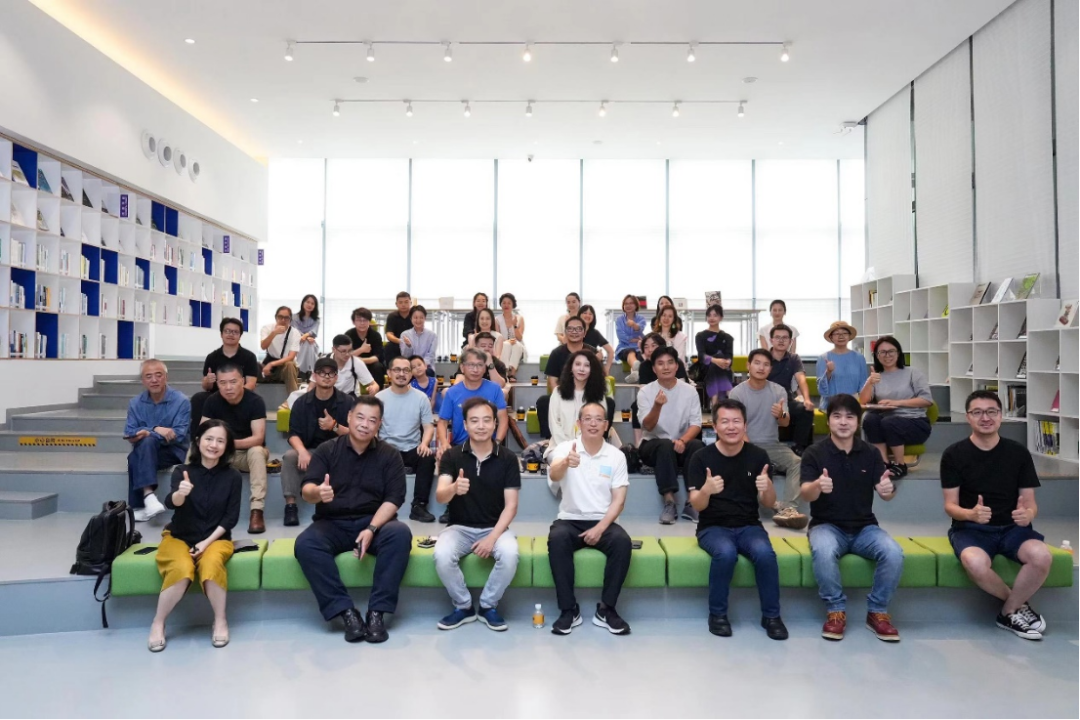 Guest Photos from the Launch Ceremony
Guest Photos from the Launch Ceremony
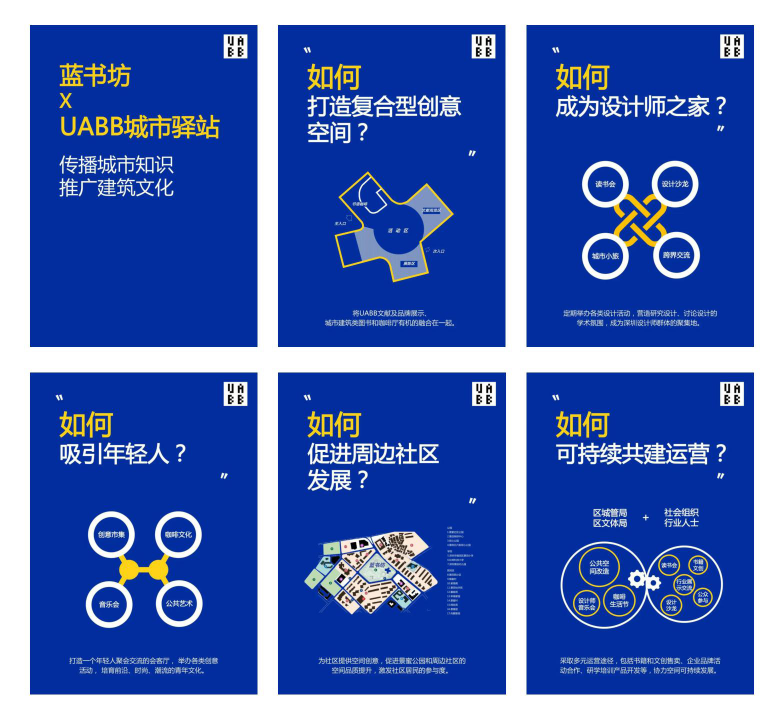
Brainstorming Session Review
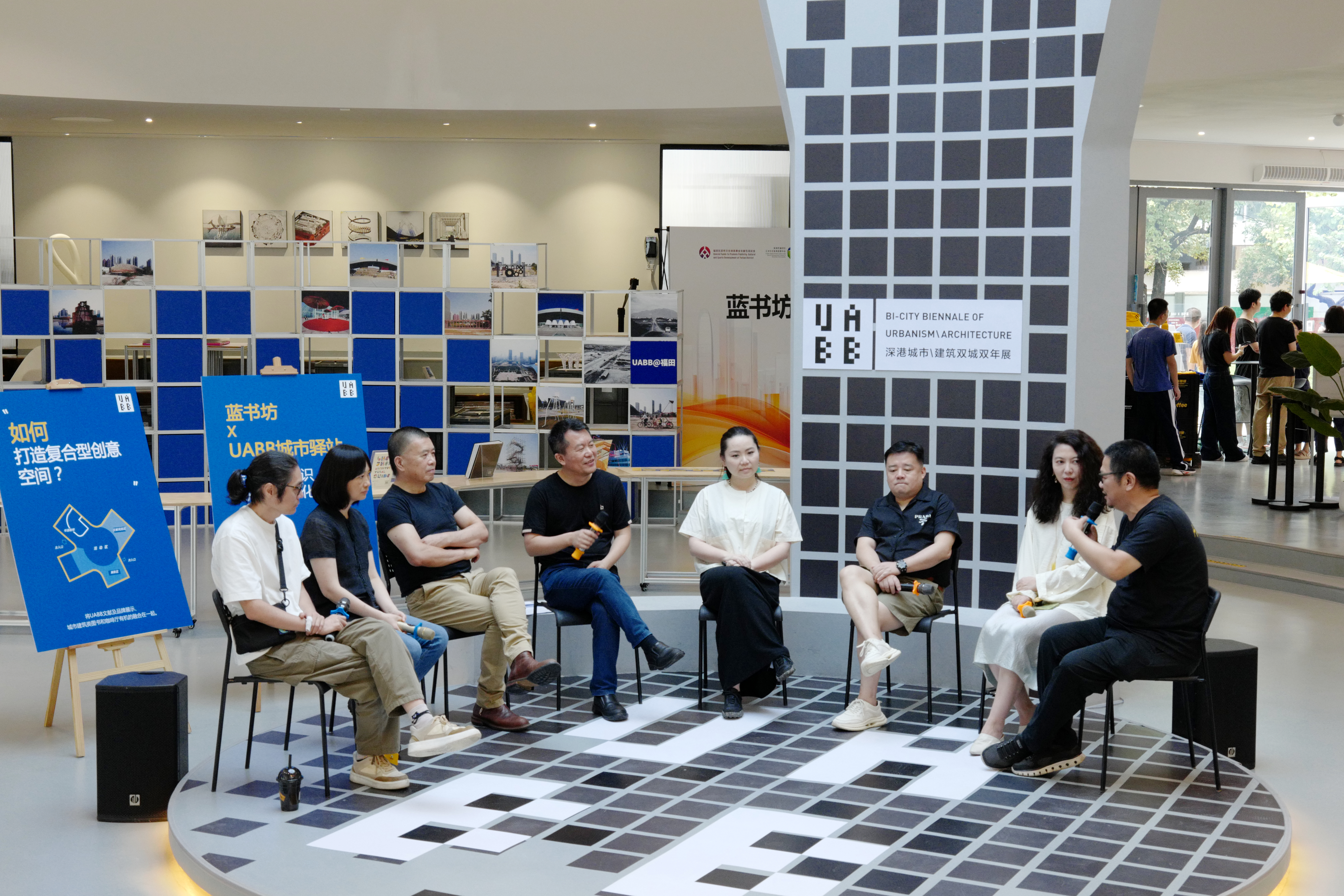
Zhang Yuxing:Chairman of the Shenzhen Biennale Public Art Foundation
We propose a new concept called "Biennale Heritage," which could gradually collect documents, archives, and materials from past editions of UABB. There might even be a research center focused on this in the future. We hope everyone can offer more suggestions to enable the UABB Urban Station to develop better and foster more interaction in future practices, allowing the city and the biennale to inspire each other. We hope the UABB Urban Station can be more sustainable.
Zhu Ye:Ph.D. Candidate at the College of Architecture and Urban Planning, Tongji University
This space may not be large, but I hope it can become a hub where things continuously happen or a place where people can take a break. It would be great if it could maintain vitality over time, as accumulated elements would then remain. That's my expectation.
Zhang Li:Director of the International Creation Center, Shenzhen Architectural Design Research Institute
There are many possibilities here. Besides the shared office space mentioned earlier, I think it's essential to consider making this station more "community-oriented." For example, should we open it to the surrounding residents for free entry? Our "Child Architecture Education" initiative, "Tongzhu Culture," could hold activities here on a public welfare basis to activate the entire space. If we can meet the needs of young people, the elderly, and children, as well as the community, this station could become the focal point of the community.
Yang Yong:Founder of Shenzhen Shangqi Art Development Co., Ltd.
I think it's a challenge to sustain the discussions and far-reaching influence that the Architectural Experts Exhibition in China has caused over the past 20 years. Many changes have occurred in Shenzhen and China during this period. However, we must take matters into our own hands. If we still want to maintain our professional integrity, it's a significant challenge. Let's all work hard.
Wu Ran:Research Director of Urbanus Architectural Design Office
When I heard that UABB finally has a home here, I genuinely felt a sense of happiness as a long-time UABB participant. In the past few editions, UABB has always been in a short-term, temporary, and somewhat show-like state, lasting only three months. So, how can we transform something nomadic and fleeting into something that can truly take root and grow in the city? I believe it needs a foundation. Previously, this root system might have been scattered throughout the city in a virtual state, but today, at this station, it seems that the tree is beginning to take root. I think this is a great start, and we can gradually unfold the future of this tree, its trunk, and its branches in the following discussions.
Shen Shaomin:Artist, Director of the Public Art Research Institute, Shenzhen University Benyuan Design Research Center;Art Director of the Science + Art Joint Laboratory, Shenzhen Institute of Artificial Intelligence and Robotics
We've always wanted to find a particularly cool main exhibition venue. I thought of the opening ceremony of the French Olympics this year. Can we break this rule and use a new model for the biennale? For example, each district in Shenzhen could have a station, and the station could be an exhibition venue for each biennale. Since the biennale lasts three months, the exhibition in the station could be displayed year-round, leaving behind documents and enriching the station. This way, ordinary people can participate, walk into the station, learn about the biennale, and expand its influence.
Han Jing:Founder/Principal Designer of QuCheng Studio
I think we forgot that this place is called Blue House, and it has the Futian Library with many books here. I suggest that these books should not only be professional architectural literature but also include popular books. There are now many books that popularize urban culture and architecture. We can combine the reading of these books to connect the relationship between professionals and non-professionals in the community. We can also hold cultural activities such as new book sharing sessions and reading sessions that are accessible to the public. This way, the elderly, children, or ordinary people can subtly learn about our city and architecture and then understand our exhibitions. I think books are a good medium, and the library's support is also here.
He Yiyang:Founder and Creative Director of SenseTeam, Principal Artist of XIANGDEMEI Art Institute
Our designers, architects, and artists should discard the formalistic or authoritarian ideas mentioned earlier and return more space to the public, allowing more people to participate in architecture. Of course, professional matters should still be handled by professionals, but professionals should serve the public. I think this is the real future way out for UABB.
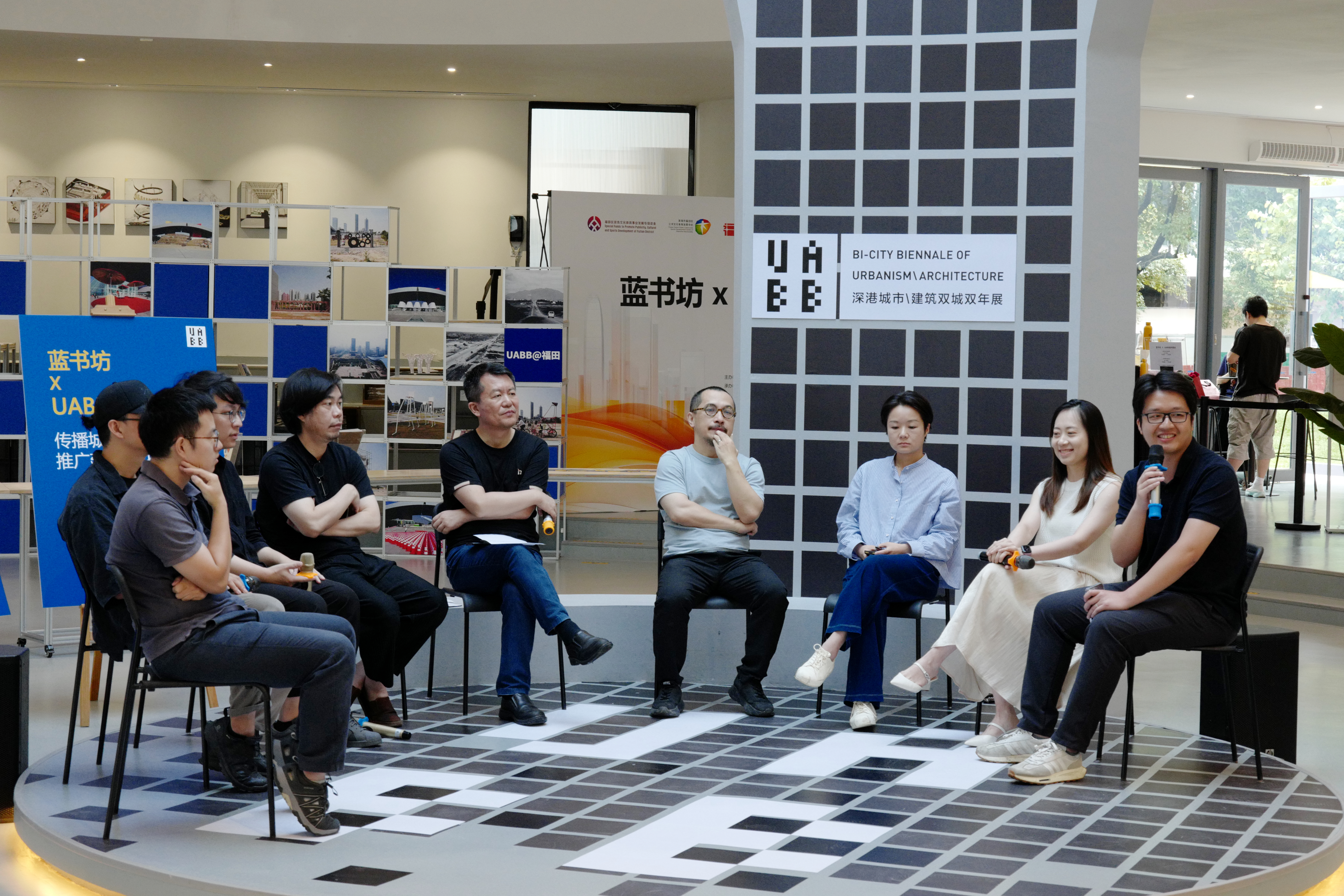
Zhuo Kefan:Assistant Director of Shenzhen Architectural Science Research Institute
In the future, can the Urban Station have some visiting architects providing public architectural consultations or diagnoses for the community on weekdays? Because urban renewal and building renovation will become the mainstream of construction in the future. The role of architects may be community building in the future, and the same goes for planners and landscape designers. It needs a place that can be called an architectural clinic to provide services for the community.
Kuang Danyi:Brand Director of Meng Jianmin Team, Shenzhen Architectural Design Research Institute Co., Ltd.
The Urban Station is first a physical space that promotes the exchange of new and old friends and the spread of architectural culture in the community. Today, many local Shenzhen architects, artists, and designer friends gathered here, which is a good example. In addition to this, can we make some breakthroughs in virtual space? Many participants in UABB come from all over the country and the world. If we use AI technology to build a virtual space and give each participant their own role, allowing everyone to break spatial boundaries and interact here, it would be very interesting.
Liu Si:Operations Director of the Greater Bay Area Innovation Laboratory, Assistant Researcher at the College of Architecture and Urban Planning, Shenzhen University
The selection of books here is very thoughtful. Can we have some thematic choices so that when people think of this theme, they will come to this place to find materials? This will distinguish it from other libraries and even allow community residents to discuss and focus on themes together, thinking about where they want to gain more knowledge. Activities in the Blue House can revolve around this theme, so people will have a stronger sense of recognition of the space and institution.
Zhu Xiongyi:Deputy Chief Architect of CCDI, Principal Architect of Dongxi Shadow Studio
The first theme of UABB was "City, Open Door." Today, the UABB station can be "Community, Open Door," and it can even become a "trendy brand store" in the community, like a shopkeeper running a brand store. On the other hand, with this station, it's like having a "base," which means a shift from "nomadic to agricultural." We should think about how to connect and summarize the 20 years of the biennale longitudinally to see what contributions UABB has made to the world.
Wu Linshou:Principal Architect of WAU Architectural Office
The station is a good case or a pioneer. All spatial transformations are inseparable from the main person or events. It must be closely related to the surrounding residents. To have a strong connection, many people are needed to maintain it. If it is still top-down, with the government investing money, that would not be right. So, who will do it? For example, some independent architects with survival crises, like me, who need an office, would welcome the opportunity to rent for free in exchange for hosting six community events a year. I would also welcome
Yan Yu:Assistant Professor and Master's Supervisor at the College of Architecture and Urban Planning, Shenzhen University
I have had the privilege of participating in three editions of the Biennale. The one in 2017 at Nantou Ancient City left the deepest impression on me, as I also conduct community research. The station aligns well with the Biennale's long-standing philosophy of nomadic and sowing ideas. It is an excellent hub for architects and artists to intervene in society through design actions. Compared to the opportunities under Shanghai's community planner system, many small and flexible urban renewal projects actually require architects to step out of their comfort zones and engage in more participatory activities. In this transitional period, it is also a positive way to educate oneself while obtaining practical opportunities.
Zhang Yuxing:Chairman of the Shenzhen Biennale Public Art Foundation
There may also be new opportunities in the future, which is a possibility. For example, in my ideal state of the urban station, the future audience might be the community directors and street office chiefs from the surrounding areas, who would often bring their children. Architects and artists continuously hold activities here, and there might be a connection with the front-line managers.
Zhu Jie:Director and Chief Landscape Architect of Shenzhen Ovopark Engineering Design Consulting Co., Ltd.
The UABB Urban Station's move into Jingmi Park is a particularly unique choice. In fact, most parks do not have the state of Jingmi. For example, those who want to play cards might be driven away after the second time. But this park can tolerate such behavior and even allow it to exist in a more diverse way, which is a particularly relaxed and vibrant state. Therefore, I suggest that our station space should also be like a living room for community residents in the future. They can come in very casually, wearing pajamas or slippers, and also discuss topics about the future of the city here.
Song Ke:Associate Professor at the School of Architecture, Harbin Institute of Technology (Shenzhen)
There is also a possibility of intervening in public affairs in a professional architectural way. For example, this space can also take on some of the functions of a community center, organizing and presenting in a more innovative way. Grassroots democratic elections should also have new possibilities here, such as electing a community representative or a people's congress delegate. I think architects' profession can also intervene in such activities. We design the form of these activities and provide a different kind of space. Because space means atmosphere, and atmosphere is a mode of work. In fact, the contribution of the architectural profession to the world is not only to provide physical space but also to provide new possibilities for social organization.
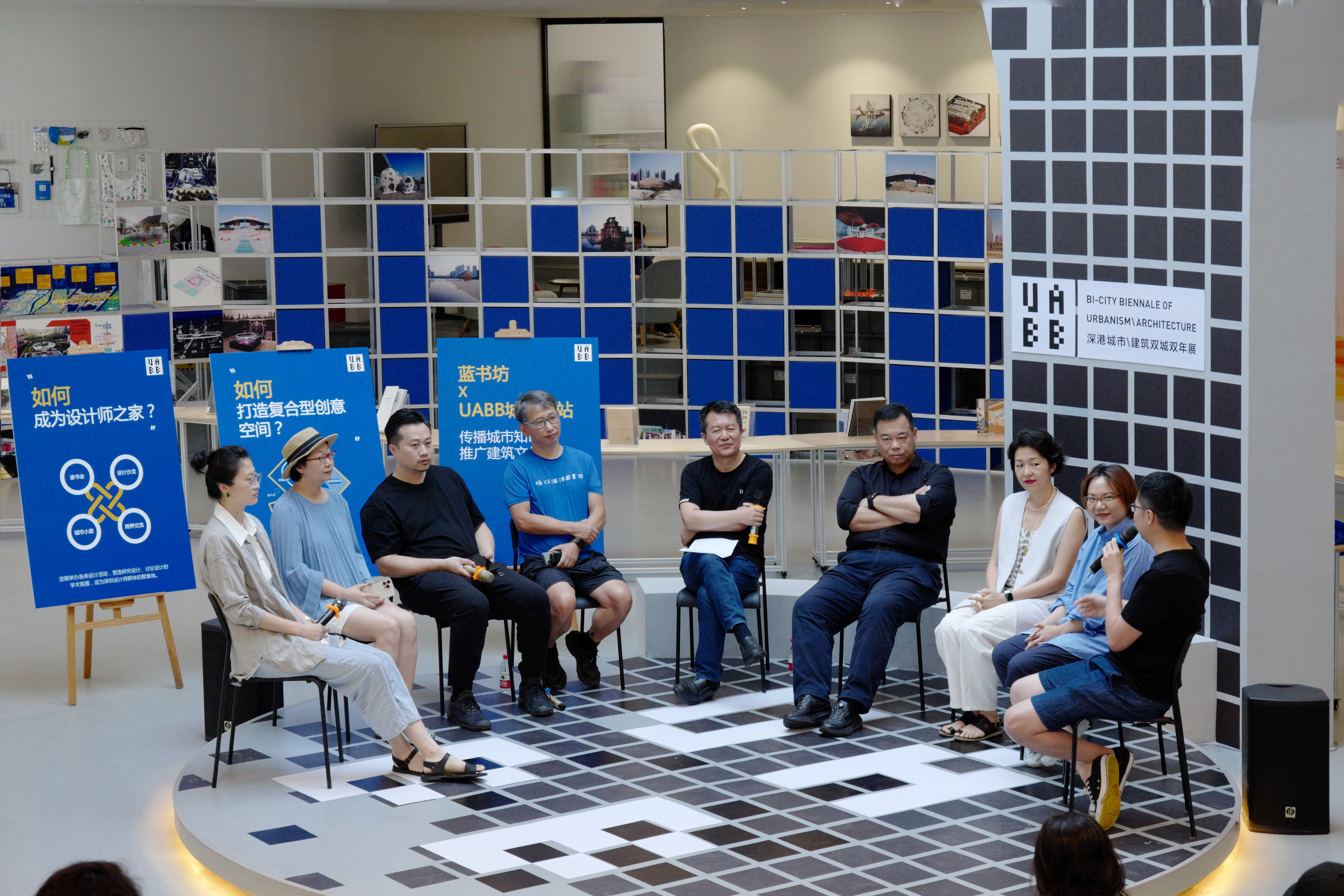
Liu Lei:Director of Urban Design and Public Art Promotion Center, Shenzhen Urban Planning Institute;Secretary-General of the Shenzhen Biennale Public Art Foundation
The name "UABB Urban Station" was proposed in a discussion with Dr. Zhang Yuxing. It mainly expresses a very important point that UABB can shift from a large-scale event to the daily life of the city. It is because of this direction that the space has taken its current form. You can see the co-construction with the café, the co-construction with the library, and the presentation of UABB's own content. This place is open from Monday to Sunday, 10:00-18:00. The café stays open until 21:00, so it is essentially a public space for the community, welcoming everyone to participate.
Dong Chaomei:Content Director of Duo Wei Culture Communication (Shenzhen) Co., Ltd.
As a former Biennale office staff member, I am delighted that the Biennale has a new space that can serve as a venue for displaying documents and facilitating exchanges outside the exhibition period. I have also recently participated in the selection of books on urban architecture for this place, gradually "restocking" the shelves. As UABB shifts towards the daily life of the city, it is even more important to take root in this place, find nearby areas, and rebuild a new support system to make some long-term plans.
Xu Yijing:Design Management Director of Qianhai Yidan Center
Studying this part is really important for pushing the key clues of the Biennale. I think of AAA in Hong Kong, which has on-site archives, books, and long-term research. Can the UABB station serve as a platform to support urban research while continuously maintaining the Biennale's international influence?
Shan Liang:Deputy General Manager and Chief Urban Designer of Shenzhen Urban Planning and Design Research Institute Co., Ltd.
The Biennale has always pursued coexistence with the city, balancing professionalism and public engagement. The establishment of the station allows the Biennale to take root in the community like a banyan tree, connecting more closely with urban life and the public, and activating community culture through acupuncture. At the same time, as a broad urban design action, the Biennale also leads a new trend in urban design work: not only creating local urban highlights but also approaching the public to focus on the quality of daily life, being able to cook both gourmet dishes and home-cooked meals for the people.
Shen Xiaoming:Librarian of Dapeng Peninsula Marine Library
The name "station" is particularly good, but I think a station is not a place to rest. Maybe architects are all too tired, and they just want to take a break when they see a station. In fact, in ancient times, a station was a connecting department. The person who rode a horse for a whole day was too tired, so he would rest in the station for a while. The next day, he had to change to another horse and continue running. So it has a connecting function. What is it connecting here? The past 20 years of the Biennale should have been a scene of great attention and a call to action, with everyone responding enthusiastically. But the next 10 or 20 years will definitely not have such an era. It is necessary to find a new space.
Chen Zetao:Founding Partner and Creative Director of Fangcheng Design
The UABB station will become a very important platform for connecting designers. The impression of UABB is very high-end, and ordinary people and designers are reluctant to participate in activities. Therefore, the positioning of the entire space is very important. I have experience in participating in the design of Vanke Cloud City and later moving into the park as one of the managers to participate in some space operation activities. In the more than a year that we have been in Vanke Cloud City, we have held four forums, six lectures, and several concerts. We also hope to build a bridge for those who love architecture and music. Because Vanke provided us with the venue for free, we were able to hold activities at a very low cost. So, this experience should be applied to the UABB Urban Station to gather more public-spirited managers to provide as many activities as possible. The most important thing is that these activities must be interesting to attract the participation of surrounding community residents and the attention and participation of more architects.
Yue Hongyan:Urban Marketing Manager and Project Researcher of Shenzhen Creative Cultural Center, Shenzhen Press Group
In 2015, Professor Terry Irwin from Carnegie Mellon University proposed the concept of Transition Design, focusing on the needs of "cosmopolitan localism" and suggesting that changes in lifestyle concepts will lead to a reimagining of infrastructure. It emphasizes a lifestyle based on local and regional aspects, while being global in terms of information and technology exchange as well as awareness. Blue House is actually a great example. It is a space that embodies the characteristics of Shenzhen, being open, friendly, and diverse, and it also reflects the warmth of the city. The perspective brought by UABB's architects and artists is essential. For a city to develop sustainably, it must pay attention to the warmth that the city provides to ordinary citizens. Integrating design into the urban space, public services, and people's lives is crucial. Blue House UABB station is a great start. It is a triadic space, a space of conception, spirit, and experience.
Jiang Suxuan:Young Artist, Assistant Researcher at the Public Art Research Institute of Shenzhen University Benyuan Design Research Center
It is valuable to accumulate locally through the collection of exhibits from each edition. For young creators, at least for me, funding is not an absolute factor. The brand influence and its status in my heart are there, and I am willing to contribute ideas and leave works.
Venue Information
Blue House x UABB Station
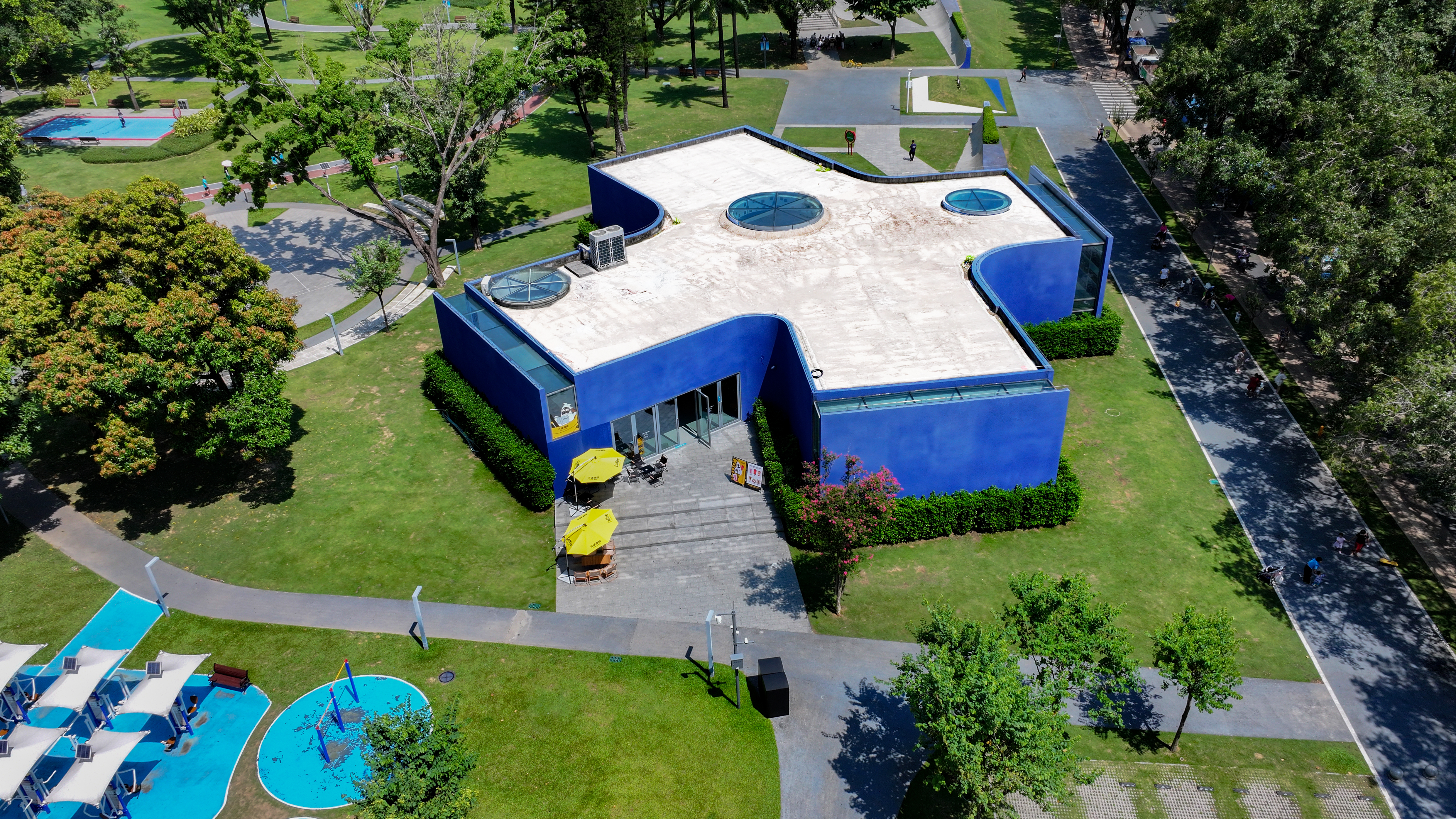
Opening Hours:
Documentation Area: 10:00-18:00
Book & Coffee: 10:00-21:00
Address:
Blue Building, South Side of Jingmi Community Park, Futian District, Shenzhen
